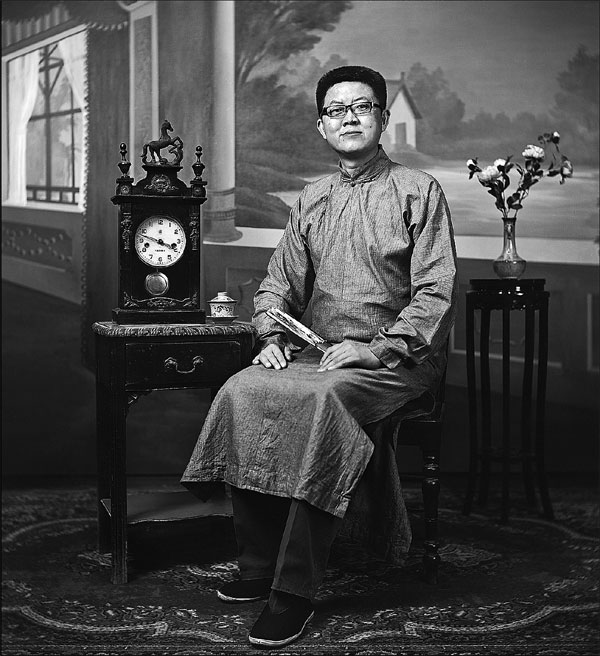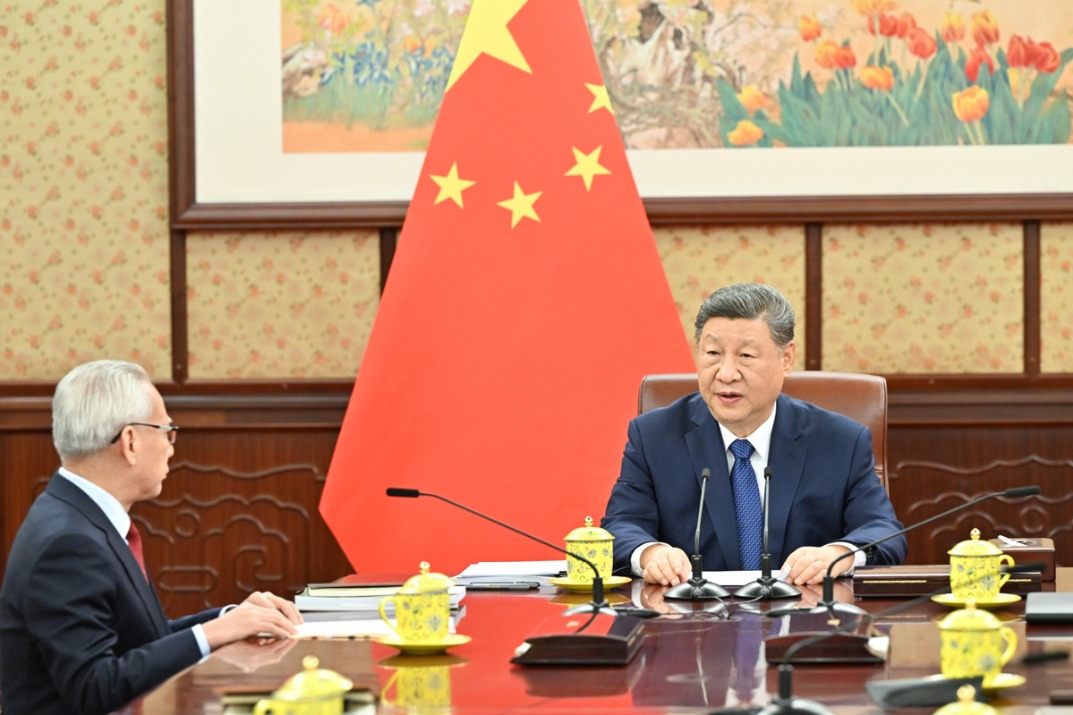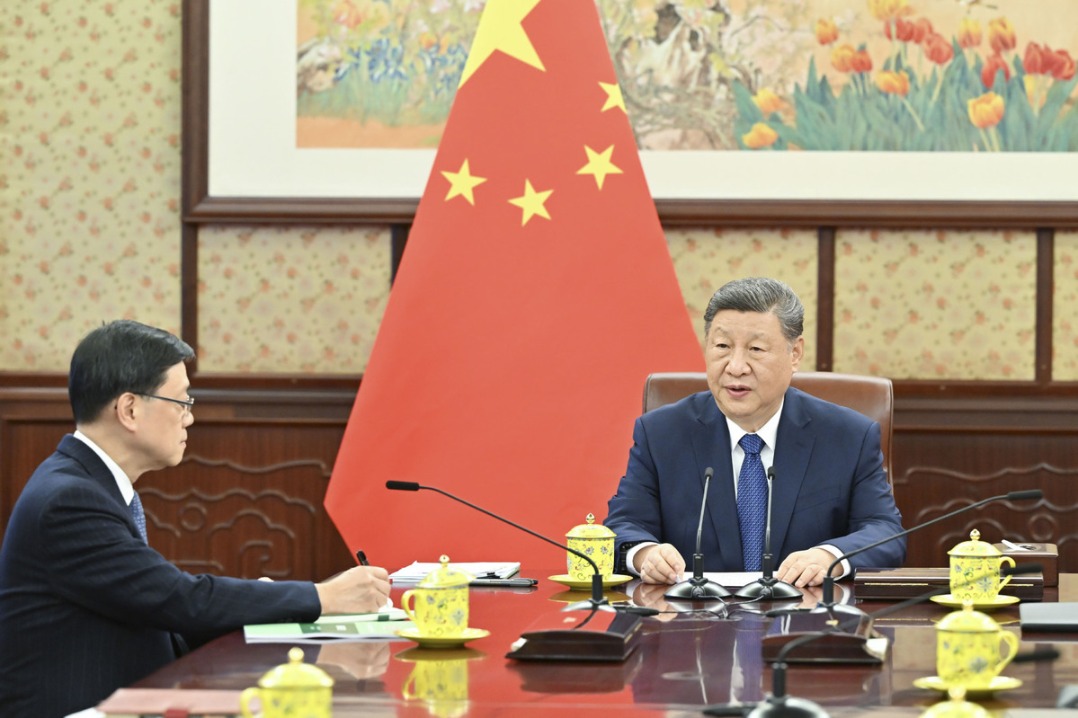'Selfies' from another century

Photo collector discovers that a 'modern' trend may not be so modern after all - and helps shed light on the fascinating history of photography in China
Taking selfies may be considered a phenomenon of the new millennium, but a Chinese man named Ye Jinglyu (1881-1968) was actually doing something very similar more than a century ago. Ye had his first portrait shot in 1901 when he was in London working as a member of the diplomatic staff of the Qing government. From 1907, he started to have a portrait taken every year. After his death, his family sold his portraits to a book collector. In 2007, 40 years after Ye died, they changed hands again when Tong Bingxue, an old photo collector and researcher, acquired them and uncovered their truel value.
Tong decided to showcase 62 portraits of Ye, taken at various photo studios around the world, in an exhibition titled Insight to Self, which is currently running at Shanghai Library.
| A photo of West Lake in Hangzhou, Zhejiang province, taken in the 1920s by the famous studio Er Wo Xuan. This image was a popular souvenir that sold at that time for 5 yuan. Provided to China Daily by Tong Bingxue |
"I named the exhibition Insight to Self because these photos of Ye, just like a mirror, remind me to take a break and reflect, something that most people don't have time for in modern society. This portrait series is just a small part of my collection, but it has given me a lot to think about in my own life," says Tong.
"My contact with Ye's grandson also revealed that Ye had kept a diary since his teenage years and it recorded his daily expenditure and bits of information about him and his wife. However, his family burned the diary during the 'cultural revolution (1966-76)'."
The collection has also been hailed by many on the photographic scene as a marvel to behold.
"Not many people in China are known to have done such a thing, to document their life through photos, and it is a miracle that these images are still so well-preserved after so many years. I think it is amazing. The album will leave a valuable mark in the history of Chinese photography," says Xu Haifeng, a senior photographer and visual department director of The Paper, a major news outlet in China.
Ye's collection of portraits has been deemed remarkable because most Chinese were not able to afford to have photos taken of themselves during the early 20th century, as China was gripped by a series of wars. Furthermore, the tradition in some regions in China is to burn or discard the possessions of those who have died.
Tong, who majored in journalism at university and works as a television producer, says that he has never seen a photo of his own grandfather, while his parents only had a few images of themselves.
The 48-year-old's interest in old photos started in 2000 when he was looking for paintings to decorate his apartment in Beijing.
After discovering that most of the paintings available at the art market were of low quality, he visited the Panjiayuan Antique Market in Beijing where he was enthralled by an old photo, set in a rosewood frame, of a village in Shanxi province. Tong immediately bought the photo and hung it on a wall in his home.
"To me, an old photo is a moment in history which tells a story and it produces a special charm. It's more significant than hanging replica paintings on the wall," says Tong.
"It's so easy for anyone to have his own photo collection. You can even create one using images shot on mobile phones. But I still suggest that people should, like Ye, dress formally and have their portraits taken by a professional photo studio, because browsing these photos that are printed on exquisite paper will help you to reflect and calm down."
Following his first old photo discovery, Tong would walk around antique markets in Beijing every weekend in search of similar treasures. He would also be on constant lookout for such images whenever he was abroad. At the beginning, Tong's family could not understand why he would spend money on portraits of unknown people, most of whom were already dead.
To Tong, however, researching the background of the people in the photos is one of the most interesting parts of his hobby.
"Who is he? Where is he? Why did he take this photo and what happened to him? Some answers are written under the photos but there is so much more to look for," says Tong.
One of his most treasured photos is a portrait of a young woman that was taken in 1870 at Su San Xing, a famous photo studio in Shanghai. In the photo, the woman is dressed in a puffy Chinese costume and has jewelry pinned to her hair. A bottle of flowers, arranged in Western style, can also be seen behind her.
Following the fall of the Qing Dynasty (1644-1911), China was forced to open some of its port cities, such as Shanghai, to Western countries and this was when foreign lifestyles and culture starting seeping into the city.
When photography first appeared in China in 1844, the Chinese thought of it as an evil that could harm the soul. When people eventually became more open to photography, they nevertheless adhered to traditional Chinese aesthetic standards - anything that was not a full-body portrait was considered inauspicious as it was likened to decapitation. Shadows on the face were not welcomed.
Photography was later popularized by the royal family and the affluent, and this inspired more Chinese, especially those in Shanghai, to embrace the Western invention. In 1861, the first modern photo studio was opened in Shanghai and it was not long after that that other studios - filled with props such as clocks, sofas and pianos - starting appearing.
From the 1920s, the photography scene in Shanghai started to thrive, thanks to the booming celebrity culture that had influenced many to dress, pose and be pictured like their favorite stars.
"At that time, Shanghai was considered the benchmark of the country's aesthetic standards, which photography helped to depict. Be it the volume of old photos or the quality of them, Shanghai tops the country," says Tong, who adds that about a third of the photos in his collection are from the city.
According to Tong, the advent of the internet brought about "an earthshaking change" in the way he expanded his collection, as the digital realm allowed him to procure many old photos that he would have otherwise never have come across. He also uses the internet as a means of gathering more information about his photos.
"I always post single photos, without any information, online and sometimes people will contact me to say that they know the person in the photo. The most interesting part of this collection, to me, is about sharing. Through communicating with others, I can have a deeper understanding of these photos," says Tong.
The price of old Chinese photos has been on the rise in international auctions. The bidding price for a photo taken during the late Qing Dynasty started at $280 in an online auction that Tong had participated in and eventually closed at $800. He says the popularity of and demand for Chinese art is rising quickly and a photo from China, taken in the same era and of the same quality as one from another country, could be worth 10 times as much. At a China Guardian auction in 2003, an old photo of The Bund in Shanghai went for 140,000 yuan ($20,280; 17,820 euros; £15,625).
While some people may see money making potential in Tong's passion, he insists that his photo collection is not about profit. He is currently in discussion with several institutions and government departments about setting up a museum to showcase the history of photography in China. The facility would include his photo collection as well as the results of the past 16 years of research into the nation's photo studios.
"The process of collecting is a long-term affair. It is only after you have gathered a certain volume that you begin to understand the objects and, by understanding them, you achieve so much more than just money," says Tong.
xuxiaomin@chinadaily.com.cn
| Tong Bingxue, a collector of old photos and a researcher. Provided to China Daily |
(China Daily Africa Weekly 07/07/2017 page19)
Today's Top News
- Crossing a milestone in the journey called Sinology
- China-Russia media forum held in Beijing
- Where mobility will drive China and the West
- HK community strongly supports Lai's conviction
- Japan paying high price for PM's rhetoric
- Japan's move to mislead public firmly opposed
































